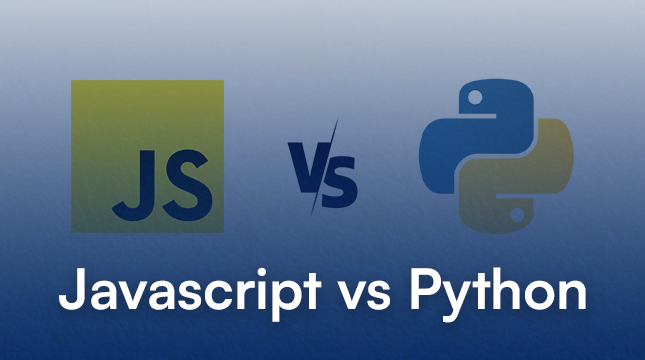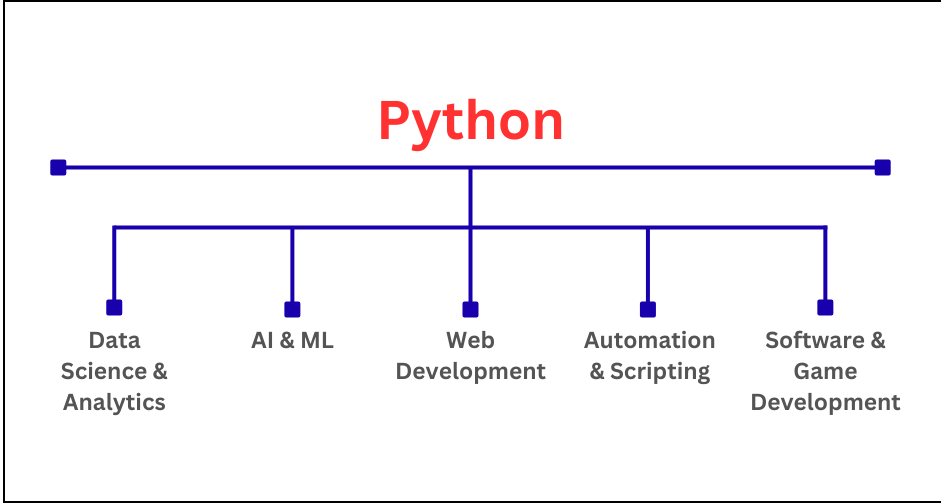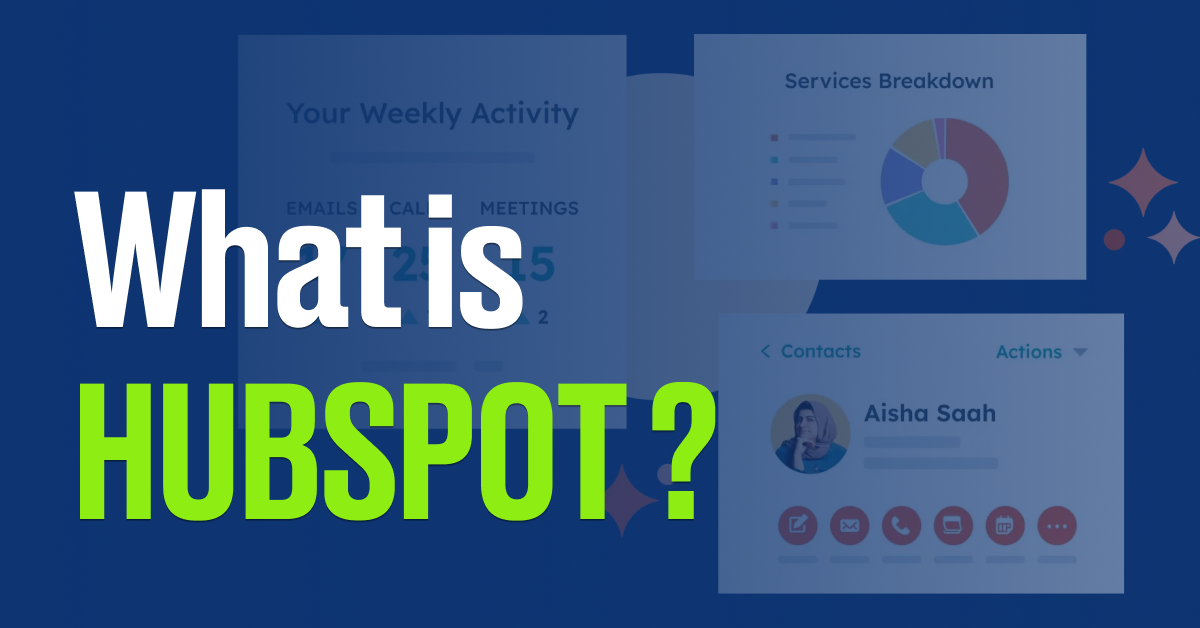This website uses cookies so that we can provide you with the best user experience possible. Cookie information is stored in your browser and performs functions such as recognising you when you return to our website and helping our team to understand which sections of the website you find most interesting and useful.
JavaScript vs Python: A Comprehensive Comparison

JavaScript and Python usually take the first place in the list of the most popular programming languages in terms of their versatility and prevalence. Both languages are useful, but in different areas. Which one is appropriate for your project? In this blog, we will look at the major differences between JavaScript and Python and how they are applied, their syntactic structure, performance, and other aspects in order to make the right choice.
JavaScript
JavaScript is a high-level, interpreted programming language that is more of a web development language. JavaScript was initially created to provide interactivity to web pages, but has become a general-purpose language applicable to either client-side or server-side work (with its use of platforms such as Node.js). And, like HTML and CSS, it is one of the fundamental technologies of the web and drives dynamic content on practically all modern websites.
Syntax of JavaScript
The syntax of JavaScript may be harder to learn, particularly because of its asynchronous use (i.e., callbacks, promises, and async/await). It has C-like syntax, including curly braces (), semicolons (also optional in most instances). For example:
// Function to greet a user
function greet(name) {
return `Hello, ${name}!`;
}
// Print the greeting
console.log(greet("Alice"));
JavaScript’s flexibility can lead to pitfalls like implicit type coercion, which may confuse newcomers.
Python
Python is a high-level and interpreted general-purpose language that is renowned due to its simplicity and readability. Python is a language developed with the attention to the clarity of the code and is popular in data science and machine learning, web development, and automation, among other fields. It is popular with developers to build a quick application because of its wide standard library and frameworks such as Django and Flask.
Syntax of Python
Python has a clean and readable syntax that is similar to natural language and is known for its fame. It has indentation to mark code blocks, so there are no braces or semicolons required. For example:
# Function to greet a user
def greet(name):
return f"Hello, {name}!"
# Print the greeting
print(greet("Alice"))
Python’s simplicity makes it an excellent choice for beginners and those prioritizing rapid development.
Verdict: Python is generally easier to learn due to its straightforward syntax, while JavaScript may require more effort to master, especially for asynchronous programming.
Key Differences Between JavaScript and Python
Let’s break down the differences between JavaScript and Python across several key factors:
| S.No | JavaScript | Python |
|---|---|---|
| 1 | High-level, interpreted language conforming to ECMAScript, primarily for web development. | High-level, general-purpose interpreted language emphasizing code readability. |
| 2 | Primarily client-side scripting, also server-side with Node.js. | General-purpose scripting for desktop and web applications. |
| 3 | Uses prototype-based inheritance model. | Uses class-based inheritance model. |
| 4 | Does not enforce correct parameter usage in functions. | Raises exceptions for incorrect function parameters. |
| 5 | Mutable: objects, arrays; other types are immutable. | Mutable: list, set, dict; Immutable: int, tuple, bool, Unicode. |
| 6 | Web-focused, event-driven, supports object-oriented and functional paradigms. | Conservative paradigm similar to C, C++, Java; supports procedural, object-oriented, functional. |
| 7 | Limited set of utility objects, relies on external libraries. | Comprehensive standard library with extensive utilities. |
| 8 | Example: <script>console.log(‘Hello World’);</script> Output: Hello World | Example: print(“Hello World”) Output: Hello World |
| 9 | Supports modern browsers, frameworks like React, Angular, fast client-side execution, asynchronous HTTP requests. | User-friendly data structures, open-source, extensive libraries (NumPy, Pandas), ideal for prototyping, efficient text processing. |
| 10 | Complex async programming, dynamic typing, cross-browser issues, single-threaded, debugging challenges. | Limited CPU performance, GIL restricts multi-threading, dependency issues, slower than compiled languages. |
| 11 | Best for web development, real-time interactive apps, client-side scripting. | Best for data analysis, AI, automation, backend development, prototyping. |
| 12 | Optimized for web, faster for client-side and I/O-bound tasks via V8 engine. | Slower for CPU-intensive tasks due to interpreted nature and GIL. |
| 13 | Vast ecosystem via npm, dominant in web development with frameworks like React, Angular. | Extensive libraries via pip, strong in data science, AI, and web frameworks. |
When to Choose JavaScript vs. Python
Choose JavaScript if:
- You’re building web applications, especially those requiring real-time interactivity (e.g., chat apps, browser games).
- You need a language that runs natively in browsers and supports server-side development with Node.js.
- Your project prioritizes performance for concurrent, I/O-bound tasks.
Choose Python if:
- You’re working on data science, machine learning, or scientific computing projects.
- You need to automate tasks or build scripts quickly.
- You value readable, maintainable code and want to minimize development time.
Also read:
Django vs Flask: Best Python Framework
Typescript vs JavaScript
Conclusion
Both JavaScript and Python are powerful yet versatile languages with their own strengths. JavaScript is the best to use in web development and real-time applications, whereas Python performs well in data science, machine learning, and rapid prototyping. The option you make relies on the needs of your project, the knowledge of your team, and what ecosystem you desire to take advantage of.
Regardless of the language you choose, JavaScript and Python both have active and well-known communities and a whole lot of resources to help you on your development path. Therefore, immerse yourself, test, and select the one that is most compatible with your objectives!
FAQs
1. What are JavaScript and Python primarily used for?
JavaScript is mainly for web development, supporting dynamic and interactive content in browsers and server applications with Node.js. Python is a general-purpose language suitable for data analysis, AI, automation, web development, and scientific computing.
2. Which language is easier to learn, JavaScript or Python?
Python is easier to learn due to its readable syntax and indentation for code blocks. JavaScript’s syntax and asynchronous features like callbacks and promises can be more complex for beginners.
3. What are the key benefits of using Python?
Python is user-friendly, open-source, versatile, with extensive libraries (NumPy, Pandas), dynamic typing, and ideal for prototyping, text processing, and unit testing.
4. What are the key benefits of using JavaScript?
JavaScript runs in all modern browsers, has frameworks like React and Angular, executes quickly on the client-side, and supports asynchronous HTTP requests for smooth data transfer.
5. What are the main drawbacks of Python?
Python is slower for CPU-intensive tasks, has limited multi-threading due to the GIL, and dependency management can be tricky. It’s less suitable for mobile apps or low-level programming.

Let's Start Your Project
Get free consultation for your digital product idea to turn it into reality!
Get Started








